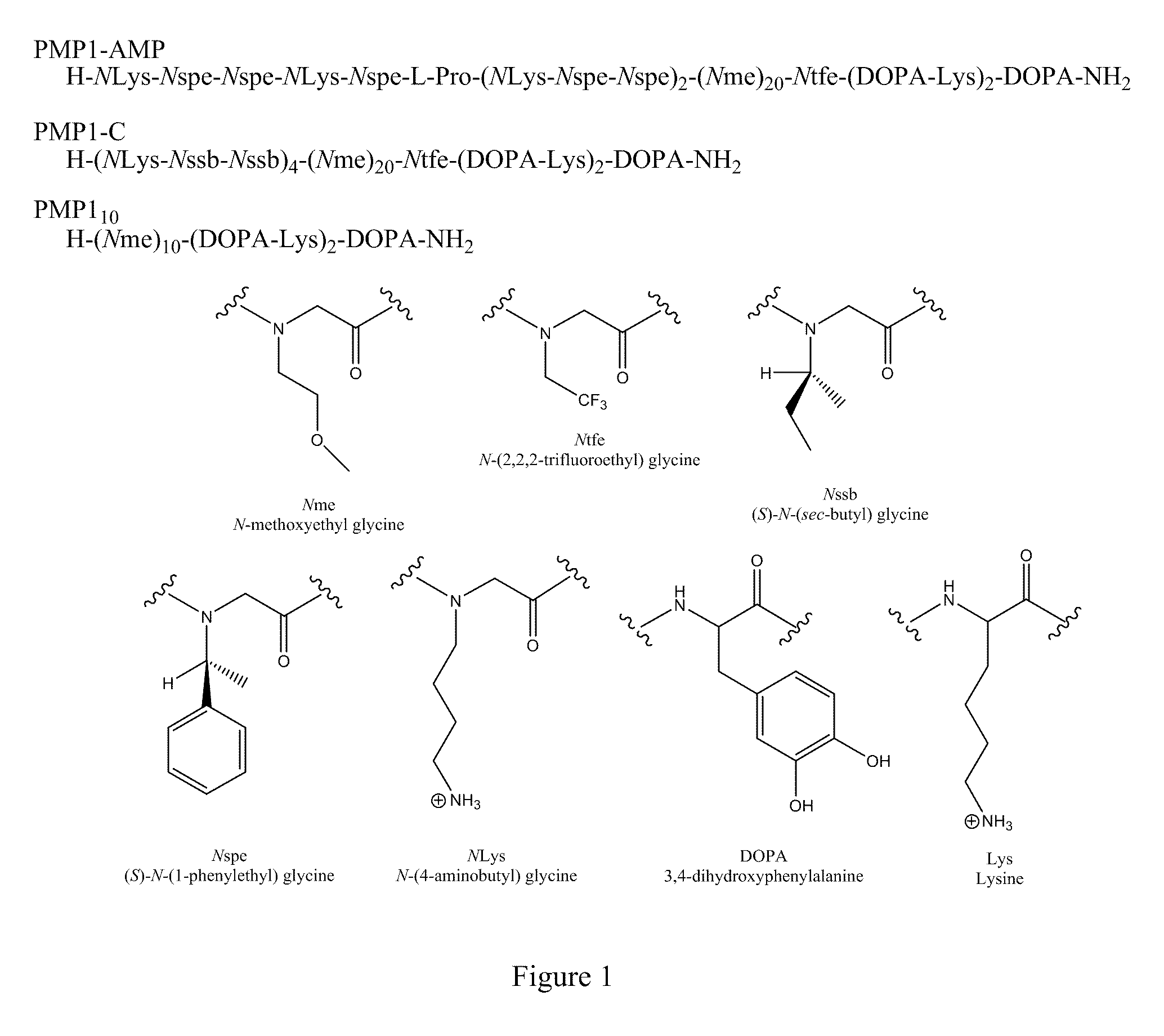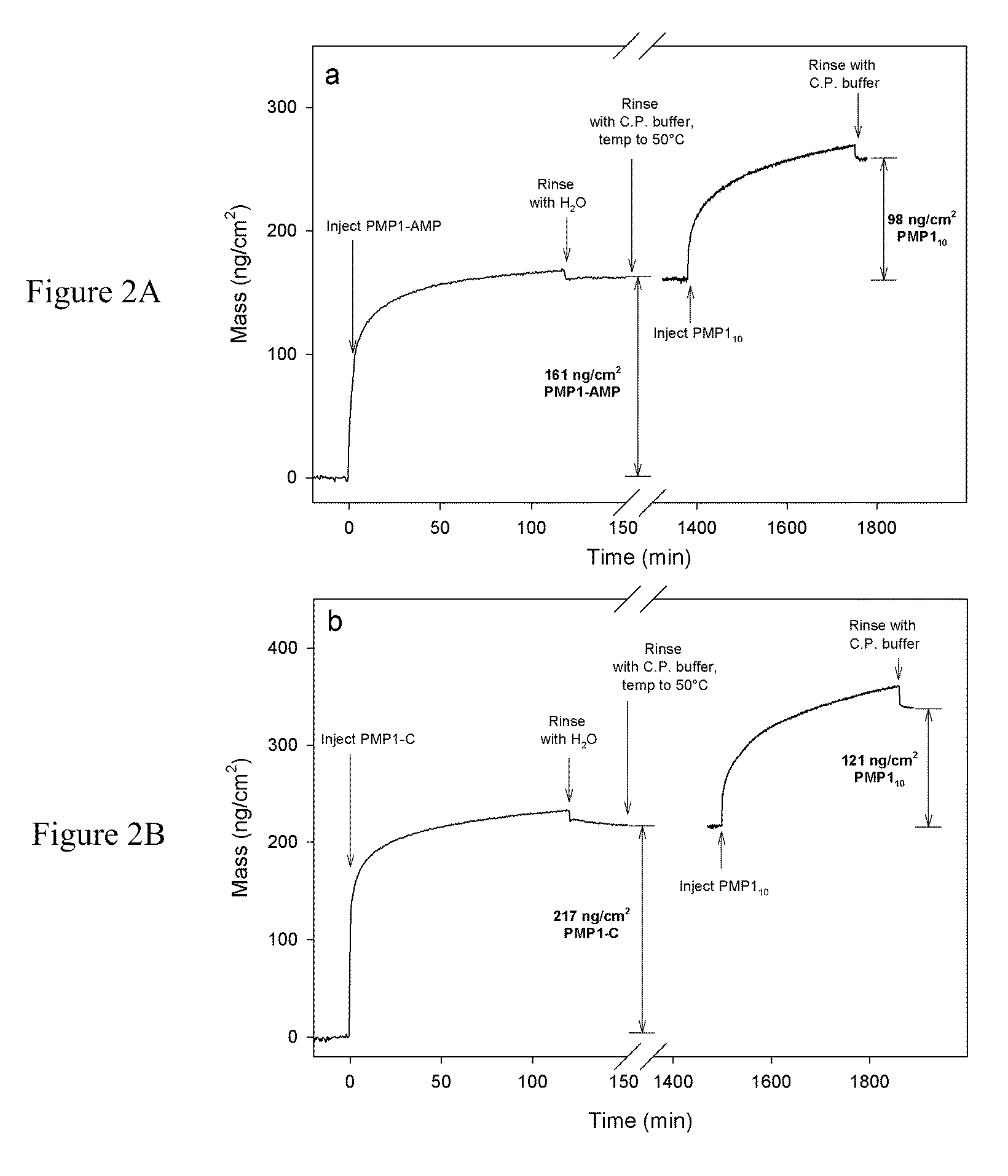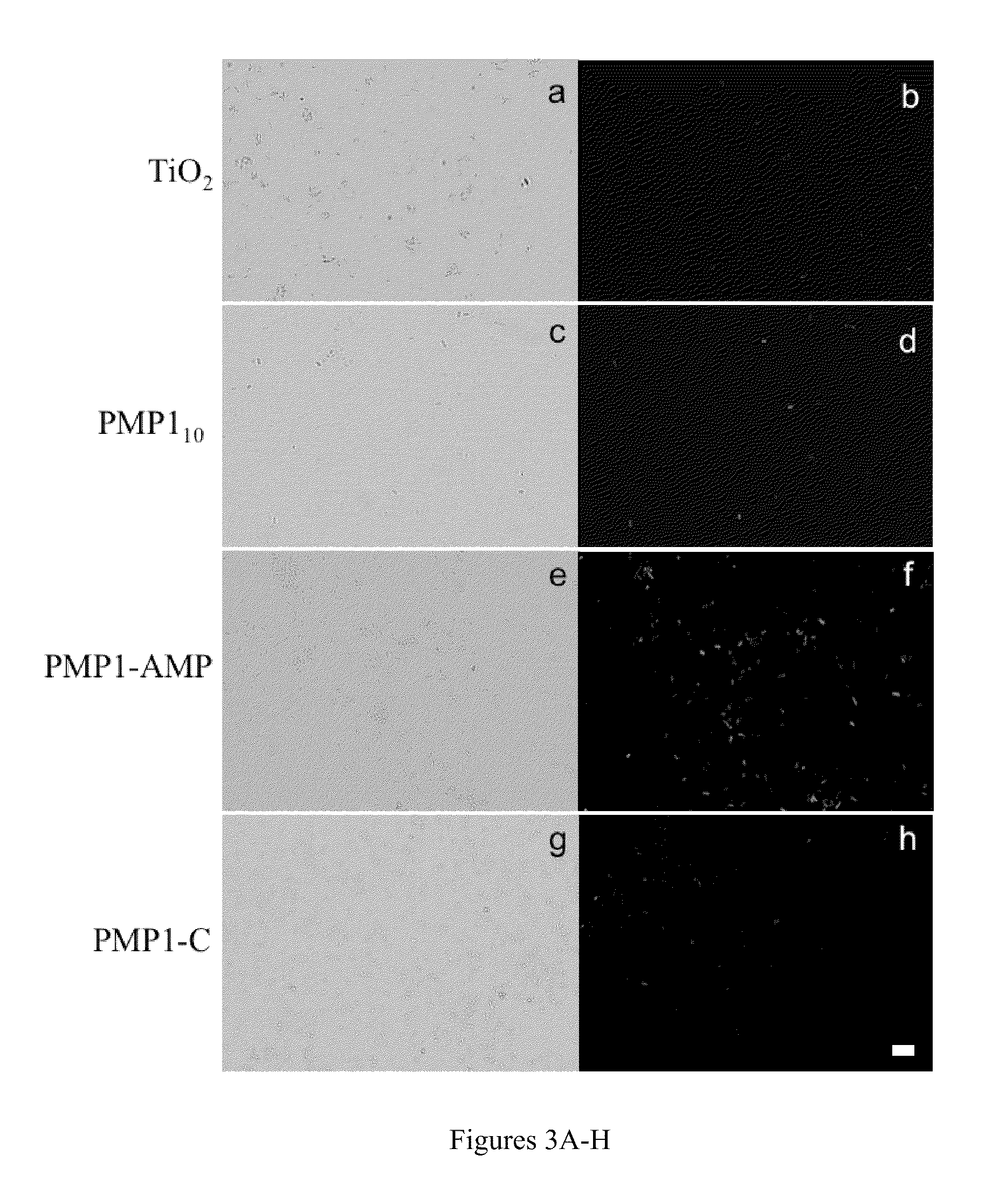Surface-Immobilized Antimicrobial Peptoids
a technology of antimicrobial peptoids and surface-immobilized peptoids, which is applied in the direction of biocides, natural mineral layered products, peptides, etc., can solve the problems that the death of catheters and pacemakers can lead to serious complications, and achieve the effect of enhancing the selectivity for killing
- Summary
- Abstract
- Description
- Claims
- Application Information
AI Technical Summary
Benefits of technology
Problems solved by technology
Method used
Image
Examples
example 1
Synthesis
[0071]Polymer sequences and peptoid monomer side chains and amino acids are shown in FIG. 1. Synthesis was performed on a C S Bio 036 (C S Bio Co., Menlo Park, Calif.) automated peptide synthesizer according to the previously described procedure (Statz et al, 2005). First, a C-terminal Dopa-Lys-Dopa-Lys-Dopa peptide was synthesized on rink amide MBHA resin using conventional Fmoc strategy of solid-phase peptide synthesis; this pentapeptide functions as an adhesive anchor for immobilization of the peptoid onto surfaces (See, the incorporated co-pending '107 application). A 20-mer N-methoxyethyl glycine (Nme) polypeptoid portion was then synthesized using a submonomer protocol (Zuckermann et al., 1992) and the resin was split. For PMP1-AMP and PMP1-C, submonomer synthesis was continued to add peptoid AMP(H-NLys-Nspe-Nspe-NLys-Nspe-Pro-[NLys-Nspe-Nspe]2—NH2) or peptoid C(H-[NLys-Nssb-Nssb]4-NH2) (See, Chongsiriwatana et al., supra, and the incorporated co-pending '034 applicat...
example 2
Antibacterial Activity in Solution
[0073]The minimum inhibitory concentration (MIC) for each polymer was determined according to Clinical Laboratory Standards Institute (CLSI) broth microdilution protocols (M7-A6). The procedure explained previously was followed (Chongsiriwatana et al., supra); briefly, serial dilutions of the polymers were prepared in Mueller-Hinton broth (MHB) in 96-well microtiter plates and bacterial inoculum in MHB was added to each well (˜5.0×104 CFU / well). Optical density was monitored at 590 nm for 16 h at 35° C. The MIC was defined as the lowest concentration of peptoid / polymer necessary to completely inhibit bacterial growth for 16 h; experiments were repeated three times in duplicate for each bacterial strain including E. coli, B. subtilis, S. epidermidis and P. aeruginosa.
example 3
CD Spectroscopy
[0074]CD measurements were conducted on a Jasco model 715 spectropolarimeter, using a quartz cylindrical cell (path length=0.02 cm). Samples were dissolved at a concentration of 50 μM in 10 mM Tris-HCl (pH=7.4). Scans were measured at 100 mm / min between 185 and 280 nm at 0.2 nm data pitch, 1 nm bandwidth, 2 s response, and 100 mdeg sensitivity. The plots contain the average data from 40 spectral accumulations.
PUM
| Property | Measurement | Unit |
|---|---|---|
| Volume | aaaaa | aaaaa |
| Volume | aaaaa | aaaaa |
| Volume | aaaaa | aaaaa |
Abstract
Description
Claims
Application Information
 Login to View More
Login to View More - R&D
- Intellectual Property
- Life Sciences
- Materials
- Tech Scout
- Unparalleled Data Quality
- Higher Quality Content
- 60% Fewer Hallucinations
Browse by: Latest US Patents, China's latest patents, Technical Efficacy Thesaurus, Application Domain, Technology Topic, Popular Technical Reports.
© 2025 PatSnap. All rights reserved.Legal|Privacy policy|Modern Slavery Act Transparency Statement|Sitemap|About US| Contact US: help@patsnap.com



